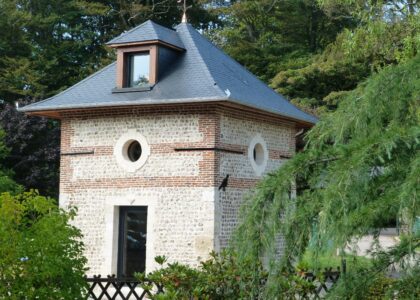Welcome to Taliesin, a place rich with history and architectural innovation nestled in the scenic hills of Spring Green, Wisconsin. This remarkable estate was the vision and lifelong project of the renowned American architect Frank Lloyd Wright. The story of Taliesin begins in 1911 when Wright returned to the land of his maternal ancestors to create a home and studio that would embody his philosophy of organic architecture.
Wright named the estate ‘Taliesin,’ which means ‘shining brow’ in Welsh, reflecting his intention to integrate the building with the landscape rather than dominating it. This concept was visible in the way the structures were built on the brow of a hill, blending seamlessly with the surrounding terrain. The initial construction of Taliesin was completed in 1911, designed as a sanctuary for Wright and his partner, Mamah Borthwick Cheney.
Tragedy struck in 1914 when a disgruntled employee set fire to the living quarters, resulting in the deaths of Mamah Cheney and six others. This catastrophic event led Wright to rebuild, creating what is now known as Taliesin II. However, disaster struck again in 1925 when an electrical fire destroyed much of the estate, prompting another reconstruction.
Despite these setbacks, Taliesin evolved into a vibrant center for architectural innovation. In 1932, Wright established the Taliesin Fellowship, a community where apprentices could learn and work under his guidance. Many of Wright’s most famous designs, such as Fallingwater and the Guggenheim Museum, were conceived right here at Taliesin.
Throughout his life, Wright continually modified and expanded the estate, using it as a laboratory for his ideas. Taliesin served as his primary residence until his death in 1959, by which time it had become a symbol of his architectural legacy. Today, the estate is a National Historic Landmark and a UNESCO World Heritage Site, drawing thousands of visitors eager to explore Wright’s genius.
Join us on this journey through Taliesin, a place where history, tragedy, and brilliance converge, offering a glimpse into the mind of one of America’s greatest architects.





